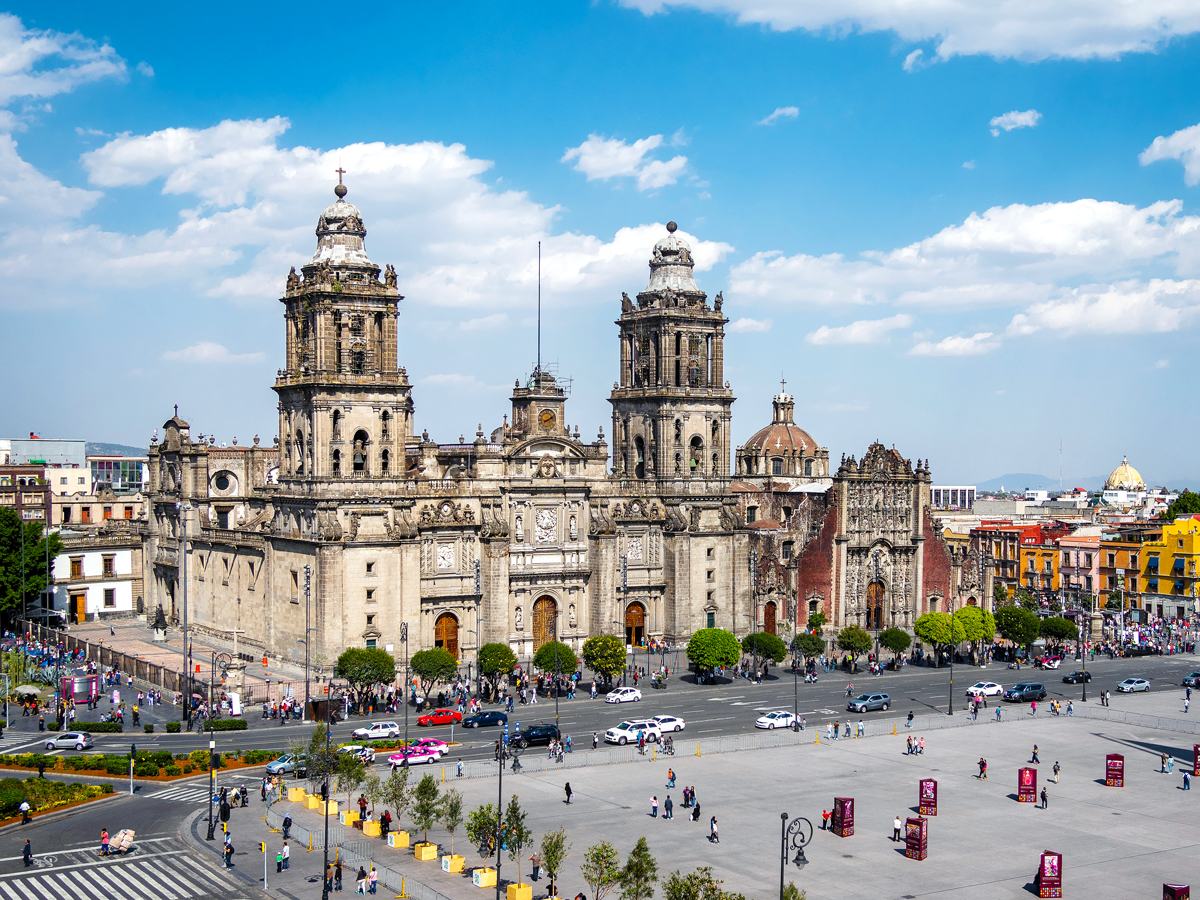Around the world, historic neighborhoods offer a fascinating glimpse into centuries of urban life and culture. North America is no exception. From one of the world’s oldest Chinatowns to “America’s First Planned City,” stroll through seven of North America’s best historic city neighborhoods below.
Chinatown – San Francisco, California
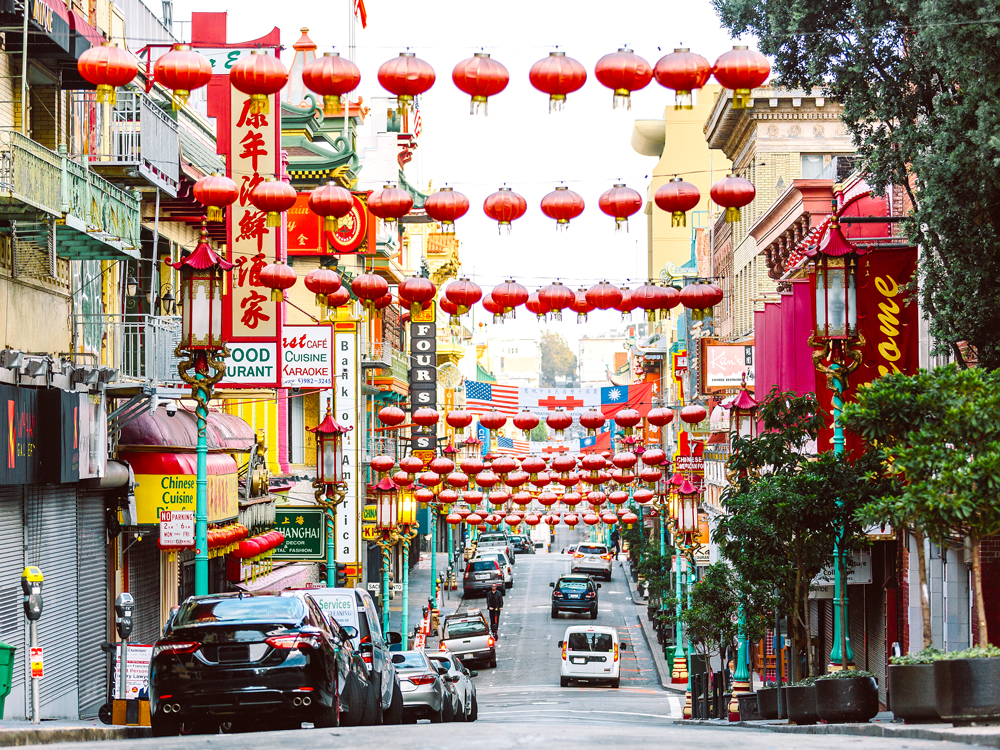
There’s no better place in the U.S. to explore modern Chinese culture and Asian American history than in San Francisco’s storied Chinatown. The first Chinese immigrants arrived in San Francisco in 1848, and the many who followed them created a vibrant neighborhood even in the face of discrimination and exclusion. Now one of the city’s top tourist attractions, San Francisco’s Chinatown is one of the largest Chinese enclaves outside of Asia and the oldest Chinese community in North America.
Chinatown is best explored on foot. Begin at the ornately tiled Dragon Gate, at the intersection of Bush Street and Grant Avenue, which is Chinatown’s main drag. Practice tai chi at St. Mary’s Square or watch games of mahjong at Portsmouth Square. Admire the architecture at the Sing Chong Building, constructed in 1907. Get your fortune read at the historic Tin How Temple, then grab a sweet treat at the Golden Gate Fortune Cookie Factory or the Golden Gate Bakery. Finally, explore the fish markets, spice shops, and vegetable stands of Stockton Street, where you’ll find succulent Peking duck at Hing Lung Company and the city’s best dim sum takeaway at Good Mong Kok Bakery — trust us, your taste buds will thank you.
Savannah Historic District – Savannah, Georgia
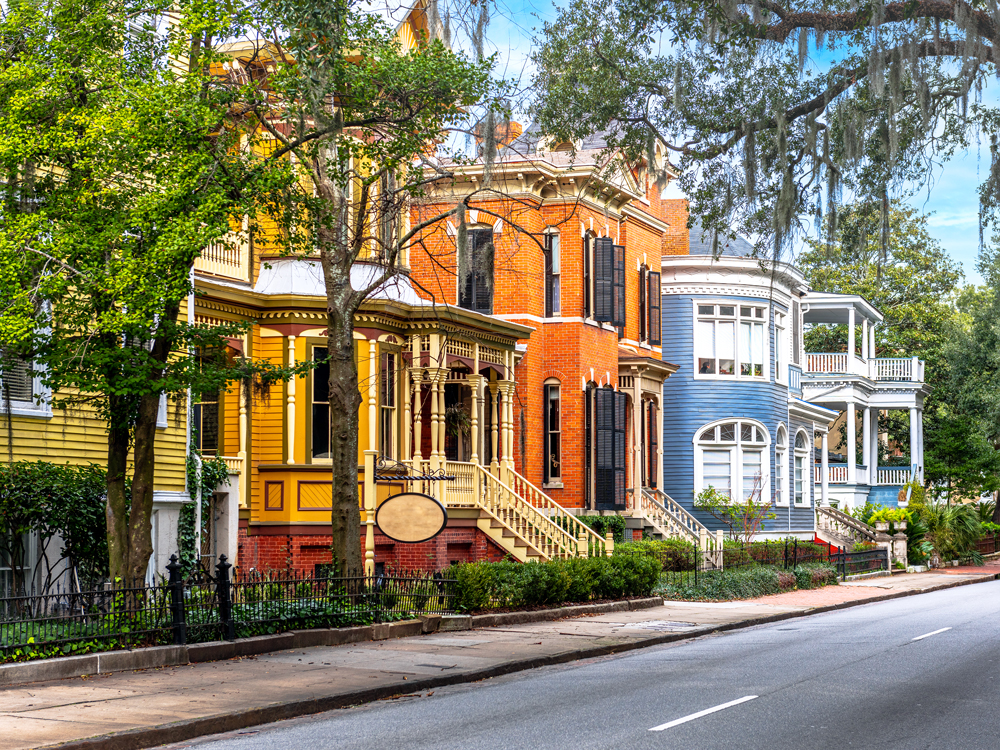
Like San Francisco’s Chinatown, the best way to experience Savannah’s Historic District is on foot. Based on the original plan created in the 1730s by James Oglethorpe, the founder of the British Colony of Georgia, this beautiful, eminently walkable neighborhood is known as “America’s First Planned City.” It encompasses 22 lushly landscaped squares draped in the city’s emblematic Spanish moss trees and criss-crossed by an orderly grid of cobblestone streets lined with impressive architecture — a mix of well-preserved Georgian, Greek Revival, and Gothic styles from the 18th and 19th centuries.
Savannah is the oldest city in Georgia, and its federally designated historic district is one of the largest in the country. Savannah’s commercial center is the riverfront City Market: a collection of boutiques, eateries, and galleries bustling with shoppers and performers. Other highlights include Forsyth Park, a 30-acre span featuring war monuments and a Garden of Fragrance designed for the sight-impaired. History buffs will find plenty here, too — from Green Square, the central hub for the African American community in the 19th century, to the French Gothic Cathedral of St. John the Baptist and a long list of historic (many allegedly haunted) houses open for tours.
Centro Histórico – Mexico City, Mexico
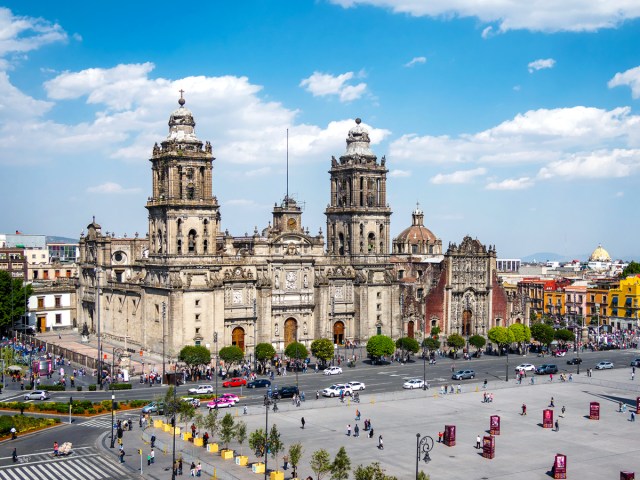
At the heart of Mexico City’s historic center is El Zócalo, the largest public square in Latin America. El Zócalo was the central ceremonial space for the Aztec city-state of Tenochtitlan, before it was conquered by the Spaniards in 1521. While the square’s formal name is Plaza de la Constitución, many cities in Mexico now refer to their primary squares as zócalos, and Mexico City’s is no exception. The grand square is surrounded by an imposing cathedral, the shops and hotels of the Old Portal de Mercaderes, and the National Palace (formerly the site of Moctezuma’s palace), with its stunning Diego Rivera murals. For some of the best views of the square, grab a drink at the Hotel Majestic.
The plaza can accommodate somewhere in the range of 200,000 people, and it has been the site of many political demonstrations, as well as concerts by artists such as Shakira and Paul McCartney. After a fictional scene in the 2016 James Bond film Spectre that showed a raucous Day of the Dead Parade, the city decided to make the parade a reality, and it’s now an annual occurrence.
Inner Harbour – Victoria, British Columbia

The capital of Canada’s British Columbia province, Victoria is effortlessly charming — from its British-influenced architecture to the expansive gardens, pedestrian-friendly streets, and seaside setting — and nowhere is that on better display than the photogenic Inner Harbour.
The region was originally home to people of the Songhees and Esquimalt First Nations (whose culture is showcased today through an interpretive walkway along the Inner Harbour), but after the arrival of the Hudson Bay Company in 1843, the area transitioned from a fishing village to a bustling cityscape lined with palatial legislative buildings. It later became an attractive tourist destination, thanks in part to the Inner Harbour Causeway, a walkway originally constructed in 1903 that still houses market stalls and street performers.
One of the star architectural landmarks of the Inner Harbour is the Fairmont Empress Hotel, an Edwardian-style 1908 building that offers both a luxury stay and a spooky adventure for those who believe rumors that it’s haunted. (Even if you’re not staying at the hotel, popping by for afternoon tea is a must.) While the Inner Harbour is pleasant to visit year-round, classical music buffs should consider visiting in the summertime, as the annual Victoria Symphony of Splash features a 56-piece orchestra performing atop a floating stage that culminates with a spectacular fireworks display.
Garden District – New Orleans, Louisiana
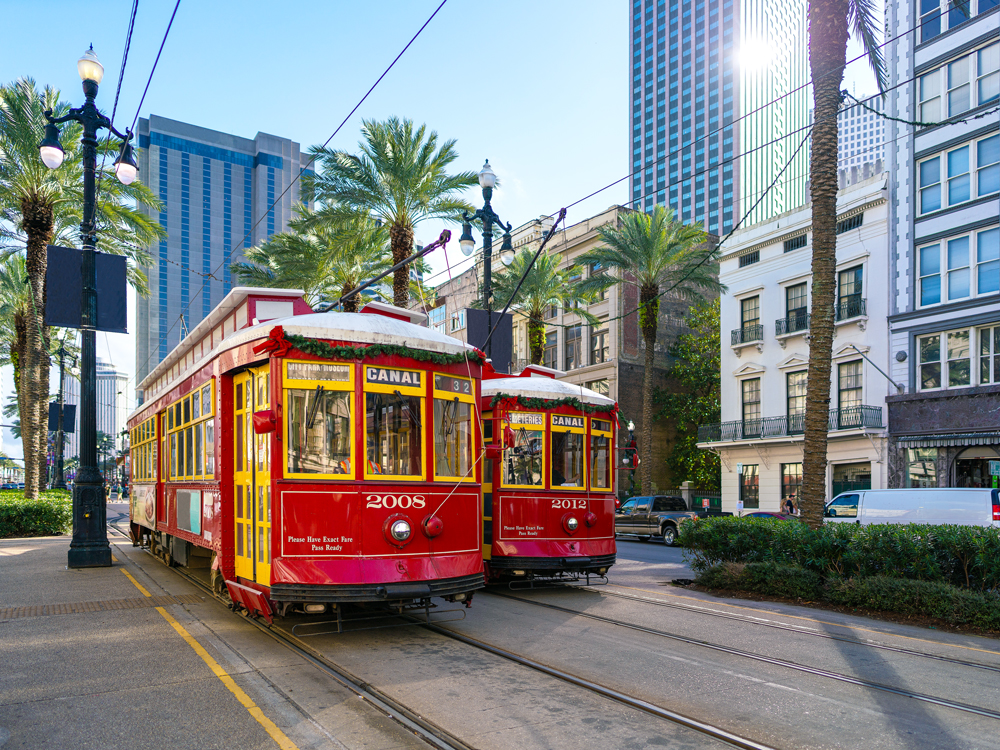
A trip to the Garden District can seem like a balm for visitors to New Orleans: On a streetcar ride east along St. Charles Avenue, the city’s mood changes from the party atmosphere of the French Quarter to something more peaceful and dignified. The streetcars rumble past block after block of Greek Revival mansions fronted by lush gardens and enclosed by elaborate wrought-iron fences. Even the occasional modern structure can’t knock the illusion that you are being ferried back to a different era.
Developed in the 1840s, the neighborhood has managed to retain its sterling reputation, even though you can still find a glimpse of macabre beauty that New Orleans is known for at the area’s Lafayette Cemetery No. 2. (The cemetery’s weathered crypts are located above ground because the city rests below sea level.) In addition to historic residential architecture and spooky graveyards, the Garden District is a thriving neighborhood with notable restaurants along the main streets (among them, Commander’s Palace, established in 1893, is still going strong), as well as a stretch of interesting shops and boutiques on Magazine Street.
Old San Juan – Puerto Rico
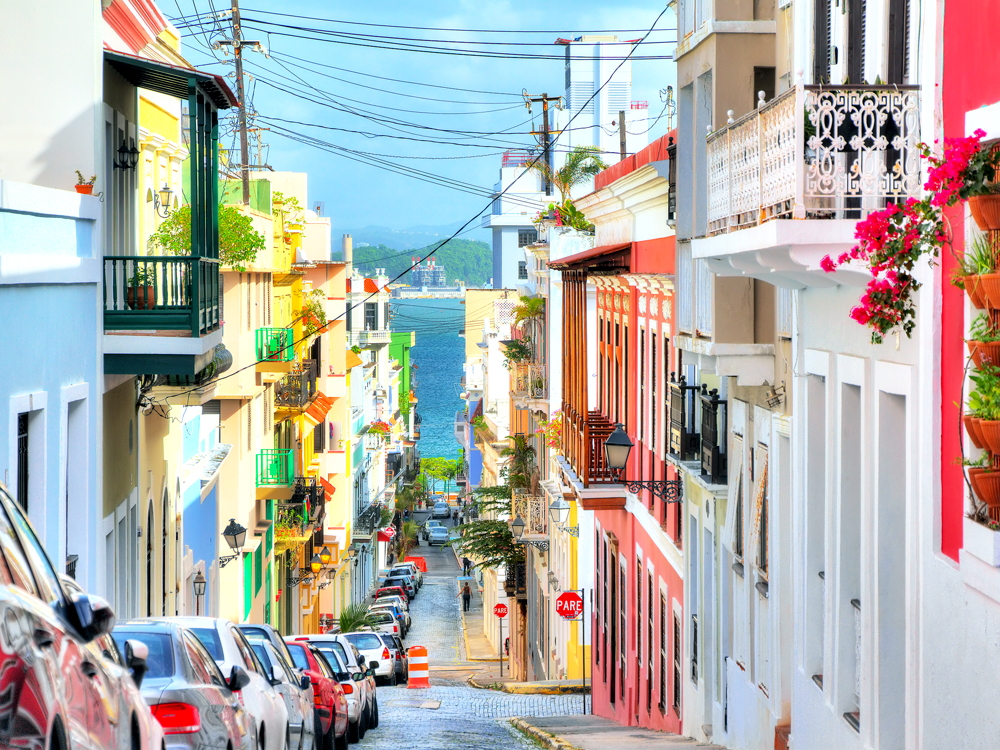
Spanish explorer — and Puerto Rico’s first governor — Juan Ponce de León never found the Fountain of Youth that he was searching for in the Americas in the early 16th century, but today you can find his final resting place at the Bautista Cathedral in Viejo (“Old”) San Juan. Built in 1521 at the beginning of Spanish colonization, the original cathedral was destroyed by a hurricane, and the current Gothic-influenced structure was constructed in 1540. The church is only one of many grand and historic monuments on the elegant islet Old San Juan occupies, which is connected to the main island by three bridges.
A free trolley services the most popular spots, but Old San Juan is a city made for strolling. Enjoy the pleasant year-round temperature and refreshing sea breezes while walking cobblestone streets through the seven blocks of this National Historic Site. Don’t miss Castillo San Cristobal, the largest Spanish fort in the New World, and the six-level Castillo San Felipe del Morro (nicknamed “El Morro”) — a fortification built between the 16th and 18th centuries overlooking San Juan Bay, it is perhaps the country’s most beloved landmark.
Vieux-Port – Montréal, Québec

Standing on the quaint cobbled streets of Montreal’s Vieux Port, it’s easy to picture yourself in New France, the young French colony back when it was inhabited by fur trappers, soldiers, Jesuit priests — all elbowing to gain control of the wild and vast Canadian continent. In fact, by the time settlers landed here in 1642 and claimed the territory for the French king, the St. Lawrence River waterfront in the Vieux-Port (“old port”) section of Montreal had already been used as a camp by French fur traders for several decades.
But as modern times barreled into Montreal, the significance of this beautiful neighborhood was overshadowed by logistical limitations. Transporting cargo unloaded from container ships to railways and trucks proved difficult and costly, so in 1976, the port was shifted a few miles downriver. Fortunately, officials later recognized that the historic quarter was ripe for tourism, and in 1992, the government revitalized Vieux-Port as a heritage destination — with programmed festivals and events and attractions that include a skating rink, an immense Ferris wheel, and plenty of green space. Now, more than 6 million visitors a year come to shop, eat, celebrate New Year’s Eve, attend concerts, and walk in the footsteps of those early settlers.
More from our network
Daily Passport is part of Inbox Studio, which publishes content that uplifts, informs, and inspires.






